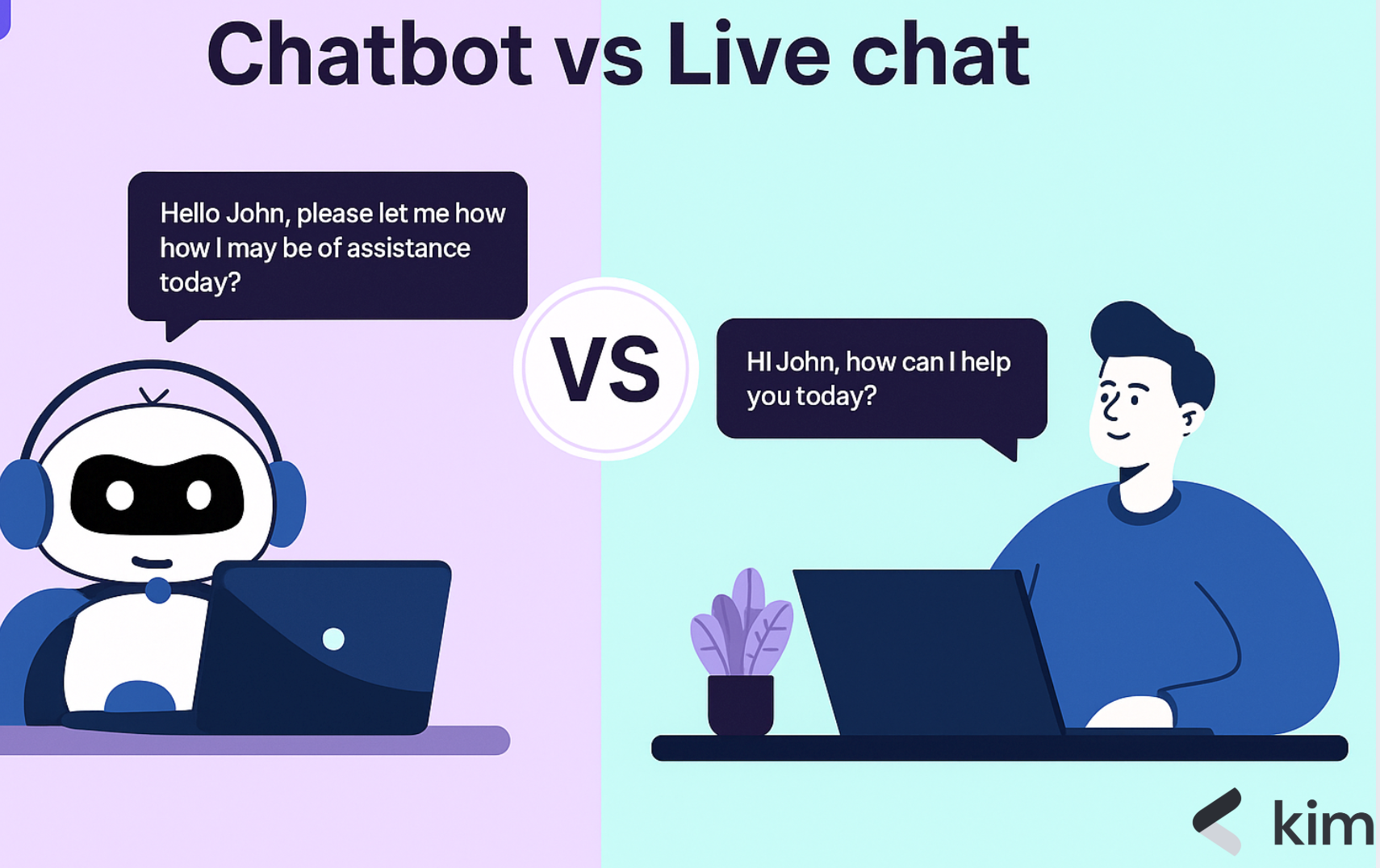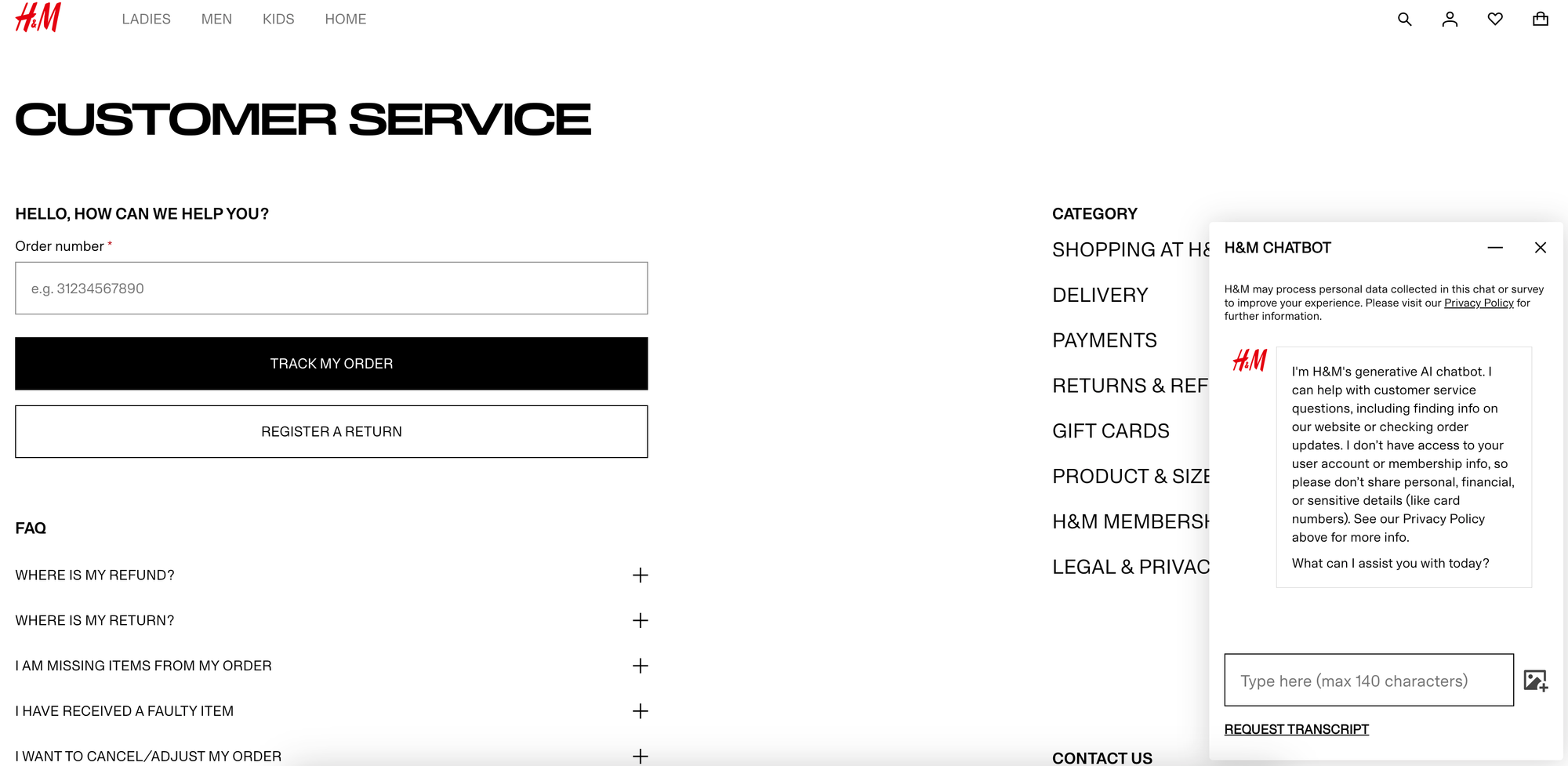Chatbot vs Live Chat: Which Is Best for Customer Support in 2025?
Imagine this: it's 2 AM, you're browsing through your favorite online store, and suddenly, a question pops into your head. You need an answer before making that purchase. Do you:
- Wait until morning for a response?
- Try to find the information yourself?
- Or, do you wish there was someone available to assist you right then and there?
This scenario underscores the importance of timely and efficient customer support. Enter the debate: Live Chat vs. Chatbots.
What Is Live Chat?
Live chat is a tool on your website or app that connects customers directly with a human agent in real time. Imagine a customer browsing for a Lululemon yoga mat and having a question about shipping or material. With live chat, they can click a widget, type their question, and get an answer from a trained human agent, right then and there.
What Is a Chatbot?
Chatbots are AI-powered virtual assistants that automatically respond to customer questions without human intervention. They are trained using AI customer service software and machine learning to handle routine tasks.
Example scenario: A customer visiting Casper’s website late at night wants to know if a mattress is in stock. A chatbot can instantly answer, provide shipping info, and even suggest related products. No human needed.

Quick Take
Think of it this way:
- Live chat = your knowledgeable friend who can help with anything and also empathize with you.
- Chatbot = the speedy, tireless assistant that answers common questions instantly but may pass you on to a human if things get tricky.
Once this is clear, we can then naturally expand into the sections on 24/7 support, handling complex queries, customer satisfaction, cost efficiency, instant response, accuracy, and all the comparisons.
1. 24/7 Support: Always On, Always Ready
In today's fast-paced digital world, customers expect immediate responses, regardless of the hour. According to recent studies, 51% of consumers prefer interacting with bots over humans when they want immediate service. (zendesk.com)
Chatbots excel in this domain. They're tireless, always available, and can handle multiple inquiries simultaneously. For instance, a popular e-commerce platform integrated a chatbot and witnessed a 20% increase in customer satisfaction due to reduced response times.
However, live chat offers a human touch that's irreplaceable. While it may not be available 24/7, having human agents during peak hours can enhance customer trust and satisfaction.
Verdict: For routine inquiries, chatbots are a boon. For complex or emotional concerns, live chat shines.
2. Implementation: Getting Started
Setting up a live chat system is surprisingly straightforward. Platforms like kim.cc offer plug-and-play solutions that integrate seamlessly with websites and mobile apps. In just a few clicks, you can have a trained human agent ready as per your requirement to chat with customers in real time, answering questions about products, orders, or even shipping updates.
Deploying a chatbot, however, takes a bit more groundwork. It’s not just about plugging it in, it’s about training the AI to understand customer queries and respond accurately. A real-world example? Sephora, the global beauty brand, implemented its AI-powered chatbot, Sephora Virtual Artist, to help customers with product-related questions, skincare advice, and even appointment bookings. The results were impressive: the chatbot handled 72% of routine inquiries on its own, reducing the workload for human agents by 35%, while also improving engagement and speeding up responses.
Verdict: Both live chat and chatbots are implementable and can be set up relatively quickly. However, chatbots require more upfront investment in training, testing, and fine-tuning to ensure they handle customer queries effectively.
3. Handling Complex Queries: The Human Element
While chatbots excel at addressing frequently asked questions, they often fall short when dealing with intricate or personalized customer needs. For example, Warby Parker, a prominent eyewear retailer, employs AI-powered tools like the Prescription Check app to assist users in determining if their vision has changed since their last prescription.
However, when customers present specific concerns, such as questions about frame fit for unique face shapes or detailed prescription adjustments, the AI tools may provide generic responses. In these instances, human agents are indispensable. They can offer tailored advice, ensuring customers receive accurate and personalized assistance.
Verdict: For complex or personalized inquiries, live chat is indispensable, as human agents can navigate subtleties and provide solutions that AI alone cannot.
4. Customer Satisfaction & Loyalty: Building Relationships
Chatbots can handle high volumes of inquiries quickly, and when well-designed, they can leave customers satisfied.
A study revealed that 87.2% of people describe their conversations with chatbots as neutral or positive. (sixthcitymarketing.com)
Which means a good bot can prevent frustration and keep customers moving through their journey.
However, there’s something about a human touch that AI just can’t replicate. Live chat agents can read tone, pick up on frustration or confusion, and respond with empathy. This personal interaction often builds trust and encourages customers to return, turning a routine support experience into a reason to stay loyal.
Verdict: Chatbots are great for efficiency and volume, but live chat shines when it comes to creating meaningful customer relationships.
5. Instant Response: Speed vs. Quality
Chatbots are lightning-fast. They give customers answers in seconds, which is perfect for simple, routine questions like “Is this item in stock?” or “What are your store hours?” Instant responses can prevent frustration and keep people moving through the buying process.
But speed isn’t everything. Quick answers from a chatbot can sometimes feel generic or miss important context, leaving customers unsatisfied. That’s where live chat comes in, human agents might take a little longer, but they can provide accurate, thoughtful, and context-aware responses, making customers feel heard and valued.
Verdict: Chatbots win when it comes to speed, but live chat is unbeatable for quality and a personal touch.
6. Cost Efficiency: Balancing the Budget
Implementing a chatbot can be cost-effective in the long run. According to industry reports, businesses can save up to 30% on customer service costs by automating routine inquiries with chatbots. (botstacks.ai)
However, live chat requires investment in human resources. While it may have higher operational costs, the value it brings in terms of customer satisfaction and loyalty can outweigh the expenses.
Verdict: Chatbots are cost-effective for handling volume; live chat is an investment in customer experience.
7. Accuracy: Getting It Right
Chatbots are getting smarter every day, but they’re not perfect. They handle routine questions well, but when a query is specific or nuanced, mistakes can happen.
Human agents, on the other hand, can verify information, cross-check details, and provide precise, reliable answers. This accuracy is especially important for complex orders, product recommendations, or any situation where a small mistake could frustrate customers.
Verdict: For critical or detailed information, live chat is the safer bet, while chatbots are great for straightforward, repeatable queries.
Pros & Cons: A Quick Overview
Combining Both: The Hybrid Model
Many businesses are adopting a hybrid approach, integrating both chatbots and live chat to leverage the strengths of each. H&M is a great example. The fashion brand uses AI-powered chatbots on its website and mobile app to handle routine questions like order tracking, product availability, and size guides.
When a customer needs more personalized assistance, for instance, styling advice, coordinating multiple orders, or resolving complex delivery issues, the chatbot escalates the query to a human agent via live chat support. This ensures customers get fast answers for common issues but also receive expert guidance when needed. (h&m.com)

Verdict: A hybrid approach like H&M’s combines speed, efficiency, and personalized care, making it an ideal solution for brands aiming to deliver exceptional customer experience.
Final Thoughts: Choosing the Right Tool
The choice between live chat and chatbots isn't about which is better overall; it's about which is better for your specific needs. Consider the following:
- Nature of Inquiries: Are they routine or complex?
- Customer Expectations: Do they value speed or personalization?
- Budget: What resources are available for customer support?
By aligning your customer support strategy with your business goals and customer expectations, you can enhance satisfaction and loyalty.
Ready to enhance your customer support? Consider implementing a hybrid model that combines the efficiency of chatbots with the empathy of live chat.